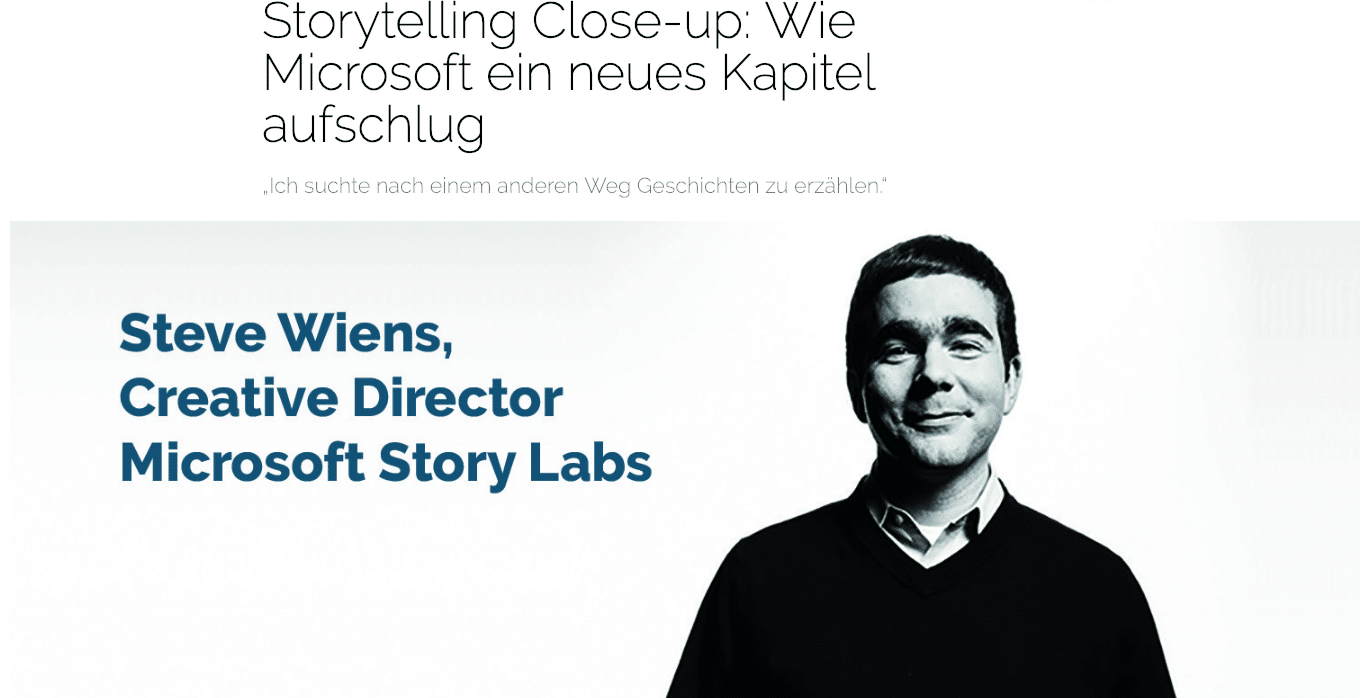Slow Storytelling: Content Manufactory Instead of Assembly Lines
Once every quarter, we set up a time frame for every consultant in our agency dedicated to writing a new blog post. With about 20 people, a “blog sprint” like this provides enough articles for the coming months. Today, again, is one of those days. Ironically, the theme of my own “sprint” is “Slow Storytelling”, a plea not to be the first to run through the finish line. Or is it?
Slow Journalism: Away from Sensations
I have derived the term from concepts such as “slow journalism” or “decelerated journalism” and “slow media”. Although there may not be many books or articles about the topic, there are many voices that speak of the concept. The first noteworthy scientific publication on the subject was written by the Australian media lecturer Megan Le Masurier. In her article “What is Slow Journalism” from 2015, she provides early definitions and characteristics. My favourite explanation of the concept is that “decelerated journalism gives up the fetish of wanting to beat the competition. It appreciates accuracy, quality and context, rather than being the first. It avoids celebrities, sensations and events already covered by a herd of reporters. It takes its time to experience things. It seeks untold stories. It relies on the power of the narrative. It sees the audience as collaborators.” (Berkey-Gerard 2009)
Good examples of slow journalism are narratively und Aeon.
But what does this have to do with Brand Storytelling? After all, this is the overarching theme of our blog. The answer: A great many things, because:
+++ BREAKING NEWS – CONTENT MACHINE CLOSE TO BURN-OUT+++
The Struggle against Invisibility and Fatigue
The great fatigue doesn’t spare Content Marketing.“How to Come Up with 93 Blog Ideas in 10 Minutes“, “101 Blog Content Ideas To Make Your Blog Post HOT”, “103 Blog Post Ideas That Your Readers Will LOVE”. Tips such as these are merely a symptom. With shooting out quickly devised headlines and topics, companies feed search engines, social media channels and inboxes. Just like their competitors, they publish their tips, tricks, best practices, how-to’s, etc, in order to not be invisible. They have to.
For a long time now I have been observing a certain fatigue in myself, also from a reader’s point of view. When I started working on our book “Storytelling für Unternehmen” (mitp Verlag), I subscribed Google Alerts on the subject, which I still scan on a daily basis. If the headline sounds somewhat relevant, I click on it, look at the first three sub-headlines and pictures and, from time to time, post it on Twitter. In reality, I only read two sentences because I can imagine the rest very easily. It has become very rare for an article to grab my attention long enough to actually finish it.
Klicken Sie auf den unteren Button, um den Inhalt von giphy.com zu laden.
Our readers are probably (hopefully) less superficial. But, let’s not kid ourselves. We have also enslaved ourselves to the assembly line. Always producing something new that we can post on our blog, Facebook, newsletter etc., showing Google that we exist. Certainly, there are other motivations, for instance that we continue to learn by writing ourselves. We also receive positive feedback by our audience, as this mail that we have recently received, shows: ”I simply have to tell you how much I enjoy reading your newsletter and how many inspirations I draw from it. Thank you very much for that!” So, there is reason for optimism.
More Attentiveness for more Attention
It is not the goal of Slow Storytelling to erase or replace all of this. It is rather a sensible alternative, or at least an addition that helps brands convey their core values by offering depth and substance to their audience.
Warning: it is more expensive. For instance, it takes us about four hours to write, edit, illustrate and post a standard blog post on a standard topic to WordPress. On the other hand, we invest more into our highlight stories about Microsoft, Hilti (which aren’t even our clients) or detailed employee portraits.
But “slow” doesn’t only refer to an allocated time frame. It also stands for uniqueness, for the omission of the trivial, for the narrative quality, for the collaboration between story, protagonist and author and for the general mindfulness we use to dive a bit deeper. This doesn’t necessarily result in longer articles. For 2017, we have published two annual reviews: one positive and one self-critical. While the positive contribution needed more time, especially in terms of visual representation, the self-critical article needed more attention in terms of reflection and honesty.
The advantage of this investment: “Slow” also reaches the public. We can notice this through the feedback that we receive and article shares. But enough about us. To offer more independent evidence: The Blendle App makes it possible to buy and read individual articles from print magazines or online subscriptions. Therefore, in times of free content, people are still willing to pay money for editorial content. Taking a closer look upon the most popular articles, you will rarely come across Trump tirades, food scandals or railway strikes (as is common in Germany). People are interested in topics with depth, approachable protagonists and contemporary relevance, such as the SZ report about Tinder marriage swindlers or insights from a famous Yale seminar from New York Magazine that teach ways for more happiness.
Therefore, slow storytelling doesn’t mean arriving last and taking as much time as possible. It means to invest more energy and mindfulness in substance, despite the fast-paced business environment. This way, the company may land on the top of the winner’s podium – with the price awarded by their readers.
…And it is more fun to create such content.
Klicken Sie auf den unteren Button, um den Inhalt von giphy.com zu laden.
Share this article
Related articles

8 April 2025







